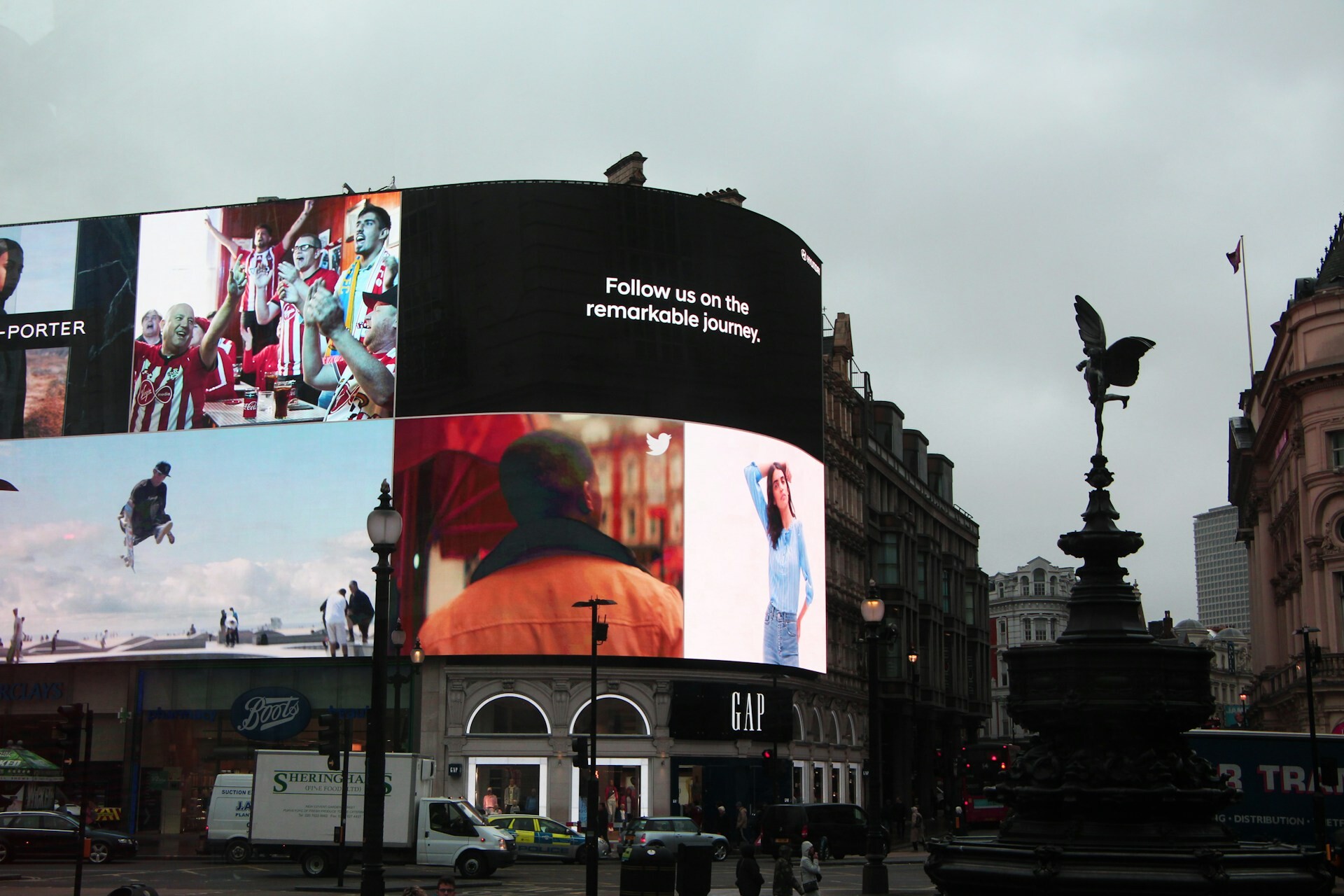Personas are fictional representations of a company’s ideal customers, aiming to help businesses understand and connect with their target audience on a deeper level. Created through market research and data analysis, they often encompass various aspects of an individual such as demographics, behaviours, preferences, and pain points.
44% of marketers use buyer personas for their businesses. Personas empower companies to sharpen their marketing efforts and create highly personalised content and sales & marketing campaigns that resonate with their audience. This ultimately leads to higher conversion rates and a better return on investment. 82% of companies using buyer personas improved their value proposition.
In this blog, we look at how marketers can utilise personas to enhance digital marketing strategy, helping with channel strategy, content creation, paid media planning, and user experience optimisation.
#1 Setting the right tone
Consider that only 1 out of 10 in your target audience might need your solution, leaving 9 who are not prospects. Without a clear persona, you risk wasting 90% of your time and resources. Crafting content and picking the channels with your persona in mind keeps marketing costs lower, as you’re targeting your ideal customer rather than a broad, less interested audience.
A persona encompasses a name, age, profession, background, family, hobbies, attitude, active channels, goals, challenges, purchase intention and consideration – mirroring a real person’s attributes.
The number of personas you have should reflect the diversity of your audience and their decision-making processes. It’s beneficial to have a persona for each customer type involved in purchasing your product or service, not just for variety’s sake, but to ensure your content addresses each group’s specific pain points.
What next?
To create a helpful persona, you must understand your real customers. Talk to them and discover their problems and objections. Crafting a persona involves asking questions and allowing their answers to shape the persona.
A few methods to gather answers include one-on-one interviews, surveys and quizzes, online research, and social listening.
#2 B2B vs B2C – similarities and differences
Fundamentally, the difference between B2B and B2C personas is minimal. Whether selling to a business or individual, the focus is on appealing to people, not entities. Research indicates that in B2B settings, purchasing decisions can involve 1 to 6 individuals. For B2B marketers, this means extensive research and prioritisation is crucial. Although covering everyone involved is ideal, it’s often not feasible to do so immediately.
On the other hand, there is difference between channels used to approach B2B and B2C customers. Customers of B2C business can get information or discover a brand in any circumstances, such as word of mouth from family and friends, search engine, social media, e-commerce sites, online review sites, or brand websites. Although B2B target is individual, the way they get business information is usually in a work environment. People are less likely willing to check work related stuff during their spare time.
What next?
Knowing a persona’s interests allows for targeted content that appeals to them, potentially leading them to your product or service. Including personalised details like hobbies and interests is still valuable, as the core principles remain consistent. For instance, a Star Wars reference could clinch a deal with a CTO who loves ‘The Mandalorian’. Remember, effective content isn’t always long-form. Even a well-crafted tweet can be a powerful tool if it contains the right elements.
In terms of channel strategy, select the channel wisely based on what service/product you sell. B2C business could engage consumers in different channels during the different purchasing stages. For example, an airline brand can start to promote itself 2-3 months before the peak season by engaging users in social media, travel forums and online travel agencies during users’ pre-travel stage, while be more active on review sites and social media during their post-travel stage. For B2B target audience, they usually find out brand information from business contacts, search engine, industry conference, emails, and LinkedIn.
Related content: TikTok Search Ads
#3 Personalising Your Content
Nowadays users, especially Gen Z, are pursuing personalisation experience during their purchase decision making process. Buyers are 48% more likely to consider solution providers that personalise their marketing to address their specific business issues.
It’s important for marketers to think about how to implement audience segmentation based on the personas you have. Persona-based content increases customer engagement by 6 times when cold leads are targeted.
Each individual persona helps identify the specific needs, challenges and interests of different segments of your target audience. Tailor message, content type, content format, style and tone to different audience segment by dynamically displaying content recommendations, customising email campaigns, or providing tailored product suggestions. According to HubSpot, personalised emails drive about 18 times more revenue than broadcast emails.
What next?
Leverage personas in content marketing by addressing their needs, engaging in constructive dialogues, and creating targeted content that highlights your strengths in response to their specific concerns. For example, if your persona questions why they shouldn’t choose a cheaper competitor with better support, this prompts a content piece comparing your solution to others. Here, highlight your strengths honestly without disparagement.
#4 Persona-based Advertising
The average person views anywhere from 5,000 to 10,000 ads every day. Marketing campaigns need to go above and beyond to get attention and stand out from this crowd of advertisements. One strategy for doing this, is to target your campaign to segmented audiences so your content gets seen by the right people at the right time. This is where persona-based marketing plays a part. Behaviorally targeted ads are roughly two times as effective as general ads.
Personas also can help you write eye-catching design and relevant call-to-action for ads campaign. If you’re creating content for multiple personas, label each post to clarify your targeting. That way, you can monitor how often you reach out to each audience segment and strike the ideal balance for your business. Later, you can compare the results from each persona’s content to identify the most valuable customers for your business.
What next?
When launching lead gen campaigns, the appealing call-to-actions for customers who are in the consideration stage would be downloading whitepaper or join event/webinar, while the decision makers are seeking for case studies or booking a demo.
Facebook Ads can also be great for lead gen since you have these more robust formats to explain why someone should sign up for what you’re offering. If they came to your site initially from LinkedIn and didn’t sign up for what you had, you get another shot by trying to hook them via a different offer with your Facebook Ads. You also can continue to reinforce your brand cheaply by running retargeting ads on Facebook to that audience, even if they did sign up for your initial offering.
Related content: Future spotting: 6 Performance Marketing Trends for 2024
#5 Seeking the right influencer
Personas let you do more than reach customers directly. You can also use audience research to find and connect with relevant influencers. When identifying influencers, determine the traits and qualities that resonate with your audience personas. Consider factors such as influencer niche, content style, personality, values, and credibility.
What next?
To identify potential partners for your brand, plug your customer demographics or audience interests into an influencer marketing platform. With this type of tool, you can easily locate influencers whose audiences align with yours.
Even if you take a more DIY approach and naturally form relationships with influencers via social media channels, you can confirm whether they’re a good fit for your brand. Ask influencers to share their audience demographics and interests so you can decide whether they’re ideal matches before moving forward with a partnership.
#6 Customising the user experience
By utilising personas, designers can determine how users will interact with a site and what features they need or want to have a positive experience. This helps them create an optimised user experience and websites that can convert. HubSpot shares that using personas made websites 2-5 times more effective and easier to use by targeted users.
User behavioural pattern plays an important part in this persona, which includes how they use the website, what their goals are when visiting your website, their friction points, and your tactical response to their needs, etc. These patterns will not only determine the user journeys but will also shape the narrative and storytelling through every page of your site, all the way down to the call-to-actions you use.
What next?
Look at every touchpoint your user comes across in their journey on your site and make it not only seamless for them to find what they need but find a way to inject your organization’s personality into each of those steps. 74% of buyers feel frustrated when website content is not personalised.
One example is Chewy, an online retailer of pet-related products, which adds in a ton of personalisation and brand personality; everything from email confirmations saying, “our paws are working on your order,” to sending condolence notes when a pet passes away. That kind of attention to detail allows Chewy to enjoy huge customer loyalty.
Key Takeaways
Personas offer your company a clear image of your customers. When you use them, they enable better, more empathetic interactions which leads to improved customer relationships, increased retention, and advocacy.
Start leveraging personas and empower your entire organization to make decisions aligned with your customers’ needs.
Curious about the trends impacting your brand? Get in touch with our data and insights specialists here.







